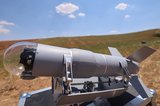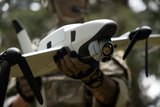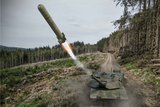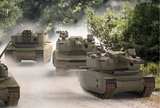EDA's AIDED project showcases autonomous UGV and UAS collaboration
AIDED showcased advancements in AI algorithms, emphasising their potential use in mission planning and other areas. (Photo: EDA)
The AIDED project, funded with €1.55 million ($1.6 million) through the Preparatory Action on Defence Research (PADR), achieved a Technology Readiness Level of three-to-four during its final demonstration in Belgium last month.
The project, overseen by the European Defence Agency (EDA) and managed by a consortium led by Belgium's Space Applications Services, featured an AI-powered 'detect and avoid' system to prevent collisions between UGVs and UAVs.
Using a combination of sensors, including the EM metal detector, Ground Penetrating Radar, Laser-Induced Breakdown Spectroscopy and specialised identification sensors, the autonomous systems demonstrated their capability to detect mock-ups of explosives and improvised explosive devices in both rural and urban settings.
Related Articles
DSEI: Milrem displays new versions of THeMIS and reveals plans for larger UGV
DSEI 2023: SpearUAV rolls out drone launcher system for submarines
Australia reverses decision on Schiebel Camcopters for naval UAVs
Neural networks were trained for each type of sensor signal processing and played a crucial role in enhancing the accuracy of the detection process.
The project showcased advancements in AI algorithms, emphasising their potential use in mission planning, self-navigation, teamwork and autonomous explosive device detection with minimal human intervention.
As the AIDED project concluded, the EDA announced the selection of its follow-up initiative, AIDEDex, from the European Defence Fund 2022 call.
This 48-month project aims to further refine uncrewed ground and aerial systems for hidden threat detection, signalling a continued commitment to advancing autonomous capabilities in defence technology across EU member states.
More from Land Warfare
-
![Elbit bets on local content for US howitzer bid as it faces off against popular systems]()
Elbit bets on local content for US howitzer bid as it faces off against popular systems
The Israeli company hopes that producing its Sigma artillery system wholly in the US will help it win a key US Army contract, but it will be up against the popular CAESAR Mk II wheeled weapon and the K9 tracked.
-
![Germany orders 84 Boxer howitzers as UK commits to a single demonstrator]()
Germany orders 84 Boxer howitzers as UK commits to a single demonstrator
Germany has ordered 84 RCH 155 self-propelled guns, as system incorporating Boxer 8×8 vehicles and the Artillery Gun Module, and 200 Puma Infantry Fighting Vehicles while the UK has committed to a single Early Capability Demonstrator RCH 155.
-
![Companies look to tank-launched guided projectiles for non-line-of-sight effects]()
Companies look to tank-launched guided projectiles for non-line-of-sight effects
While integration of guided weapons on modern armoured vehicles usually takes the form of a podded launcher on the turret exterior, recent developments suggest the concept of firing missiles from a tank’s main gun could be seeing a revival.
-
![Germany signs multi-billion-dollar deals for 6x6 CAVS and GDELS Eagle vehicles]()
Germany signs multi-billion-dollar deals for 6x6 CAVS and GDELS Eagle vehicles
The order is a further boost for the Common Armoured Vehicles System programme which has notched notable successes in the past 12 months. The first vehicle, made in Finland, will be delivered next year with local production expected to ramp up in 2027.
-
![Rheinmetall and KNDS tank tie-up narrows trans-European options]()
Rheinmetall and KNDS tank tie-up narrows trans-European options
The French and German governments signed an agreement in June 2018 to cooperate on the development of a new main battle tank under the Main Ground Combat System programme but the effort has struggled. This new agreement may damage it further.
























